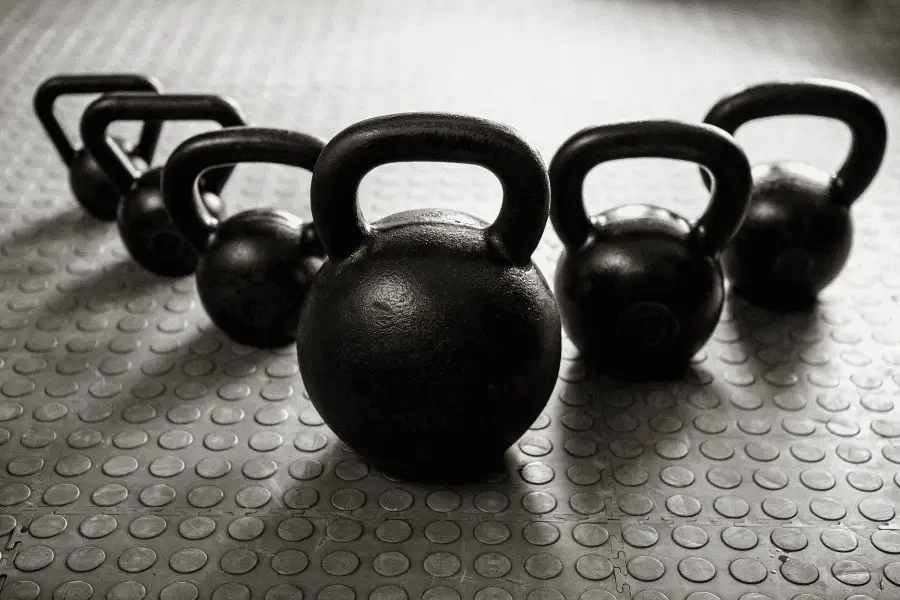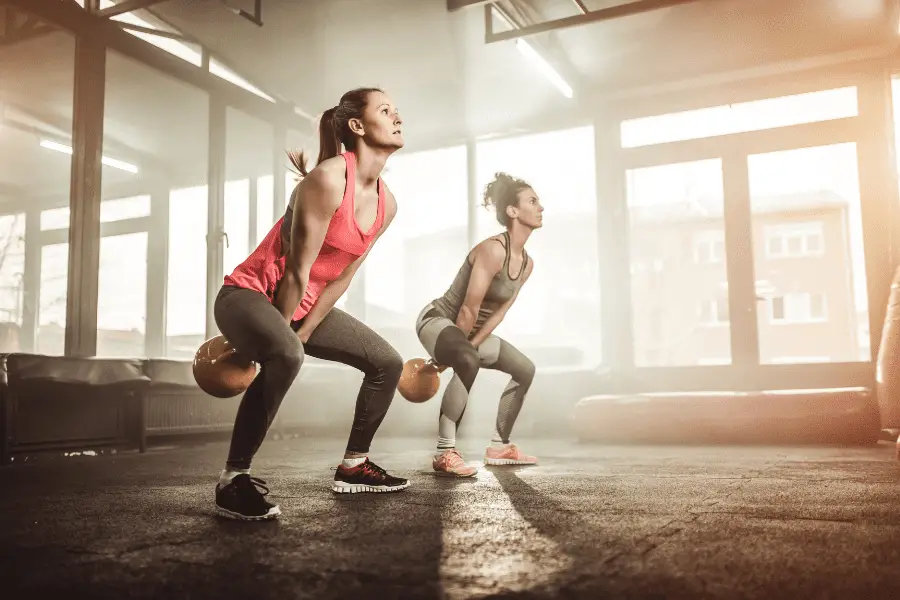There are tons of different kettlebells available. That can make it a bit difficult to understand what the right choice is and why. Luckily, kettlebells are very simple pieces of gym equipment so it’s not that hard to select the right one. Here’s how you do it.
The best kettlebells have a cast iron core. Enameled or vinyl-coated kettlebells are good budget choices while powder-coated and neoprene-covered kettlebells cost a bit more but look and feel nicer. A single kettlebell is enough to get started but you’ll need more over time in order to progress.
In the rest of this guide, we’ll go through all the different important factors for choosing the right kettlebell. What are the options and which one is best?
Contents
Understanding Kettlebells
Before we dive in, there are a few things to understand about kettlebells. Knowing these things will make selecting one easier.

Parts
Kettlebells are a very simple piece of equipment. They are usually made out of a single piece of metal but the parts have different names:
Choosing The Right Kettlebell
Selecting the right kettlebell is essential for an effective and safe workout experience. Consider the following factors when making your decision:
Weight
The weight of your kettlebell is perhaps the most crucial factor to determine. It directly impacts the effectiveness of your workouts and your ability to progress. Here are some guidelines for choosing the appropriate weight:

Beginners can start with a single kettlebell, typically in the range of 8 kg/15 lbs for women and 12 kg/25 lbs for men. Those weights are good for beginners who do full-body workouts However, having a range of weights is ideal for different exercises.
After a while, you’ll have to increase the weight to keep the workouts challenging.
By the way: If you’re not 100% sure if you should buy kettlebells or dumbbells, click here to find an in-depth article comparing the two.
Number of Kettlebells
Consider your fitness level and how you plan to progress over time. You should start with a weight that challenges you but still allows you to maintain proper form. As you gain strength and experience, you can gradually increase the weight of your kettlebell. The goal is to achieve progressive overload without sacrificing technique.
While you don’t have to buy all the kettlebells immediately, choose a range of kettlebells that has a nice range of weights where you can progress without taking huge jumps. 2-3 pound increments for light kettlebells and 5-pound increments for heavier ones are perfect.
Read more in this article: How many kettlebells do you need?
Material And Coating/Finish
Kettlebells are constructed using various materials, each with its unique characteristics. The choice of material can significantly affect the kettlebell’s durability, appearance, and price. Here are the most common materials used:
Cast iron is by far the best choice. While more expensive than cement ones, the difference isn’t that big. They last a lot longer and are better to use. Well worth the extra money you pay for them.
Overview of Common Coatings and Finishes
Above, we’re talking about the core materials. However, kettlebells are often covered with materials that serve various purposes, including protecting the weight from rust and providing a comfortable surface for gripping.

Here are some of the common cover materials used in kettlebell construction:
Powder coating is a great choice but if you want a soft exterior, choose vinyl or neoprene. Neoprene feels a bit better but also costs more.
Most of the time, you’re touching the handle of the kettlebell and not the body. So covers like vinyl and neoprene don’t really impact the feel of the kettlebell all that much.
Handle Design and Finish
The handle of a kettlebell plays a crucial role in providing a comfortable and secure grip during exercises. Consider these aspects:
Design: Look for a handle design that accommodates both single-handed and two-handed movements. The handle should be wide enough to grip comfortably with both hands and have a relatively smooth yet slightly textured surface.
Avoid handles that have knurling, as they can cause tear up the skin of your hands. Use chalk if you need more grip.
Finish: The handle finish should be well-crafted to prevent chafing or blisters on your hands. Knurling is a bad idea for that reason. It can tear up your hands. Bare iron or powder-coated handles feel great and work well with chalk
Chrome looks nice but is a bit slippery once your hands get sweaty and using chalk is almost mandatory. Enamel works well since it usually has a little texture but it doesn’t feel as nice as powder coating. Bare iron feels very nice but it needs a lot of maintenance to prevent corrosion.
Type
Kettlebells come in various types, including traditional kettlebells and adjustable kettlebells. Your choice depends on your workout preferences and space availability.
Traditional kettlebells are suitable for those who prefer specific weights for different exercises. Adjustable kettlebells are ideal for individuals with limited space or those who appreciate versatility in their workouts.
Read more about adjustable kettlebells here: Pros and cons of adjustable kettlebells.
Budget
Kettlebells vary widely in price, even if you look at it on a per-pound basis. Vinyl-coated kettlebells tend to be the cheapest, followed by enameled ones.
Basic kettlebells are available from about $1.10 per pound but expect to pay closer to $2 per pound for neoprene and powder-coated options.
The good news is that durability-wise, cheap kettlebells will last pretty much just as long as expensive ones, as long as the core is made from cast iron. The difference is looks and feel which is personal to a degree.
Just know, that if you choose cheap cast iron kettlebells, you aren’t really missing out on anything functionally.


